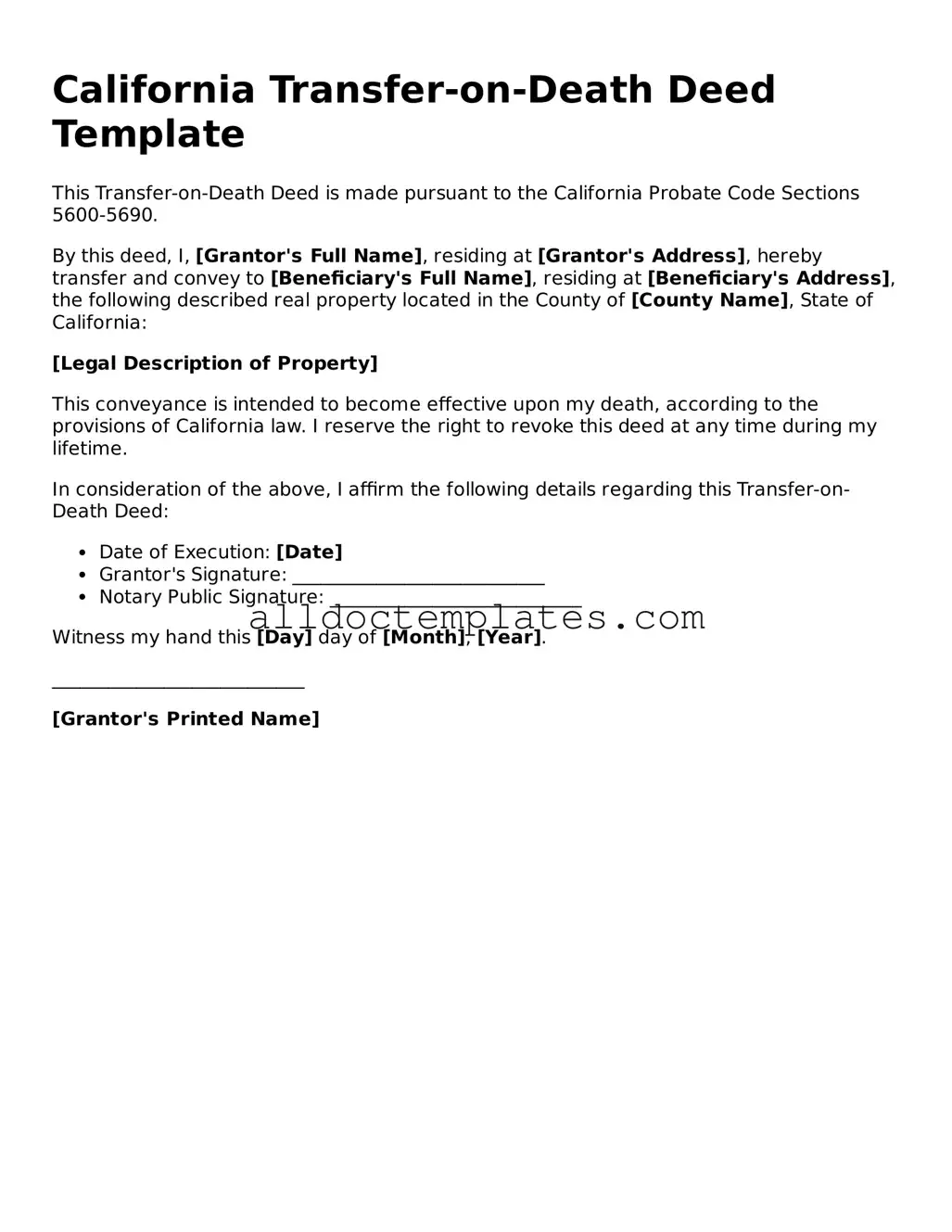Free Transfer-on-Death Deed Document for California State
The California Transfer-on-Death Deed form allows property owners to designate a beneficiary who will receive their real estate upon their death, bypassing the probate process. This straightforward legal tool simplifies the transfer of property and provides peace of mind for both the owner and their loved ones. Understanding how to properly complete and utilize this form is essential for effective estate planning.
Get Your Form Now
